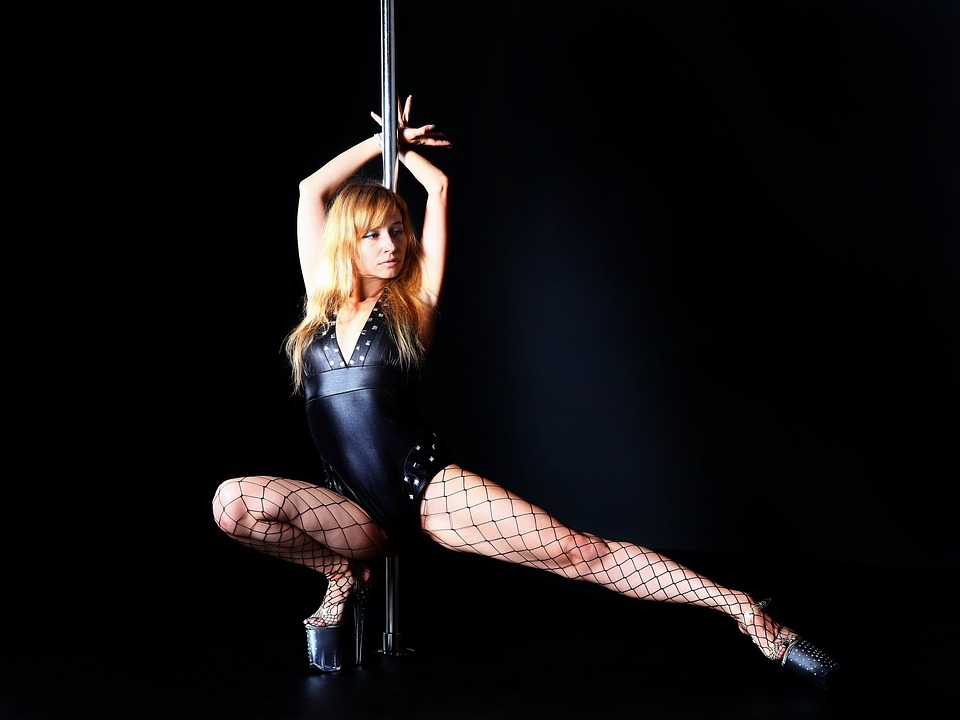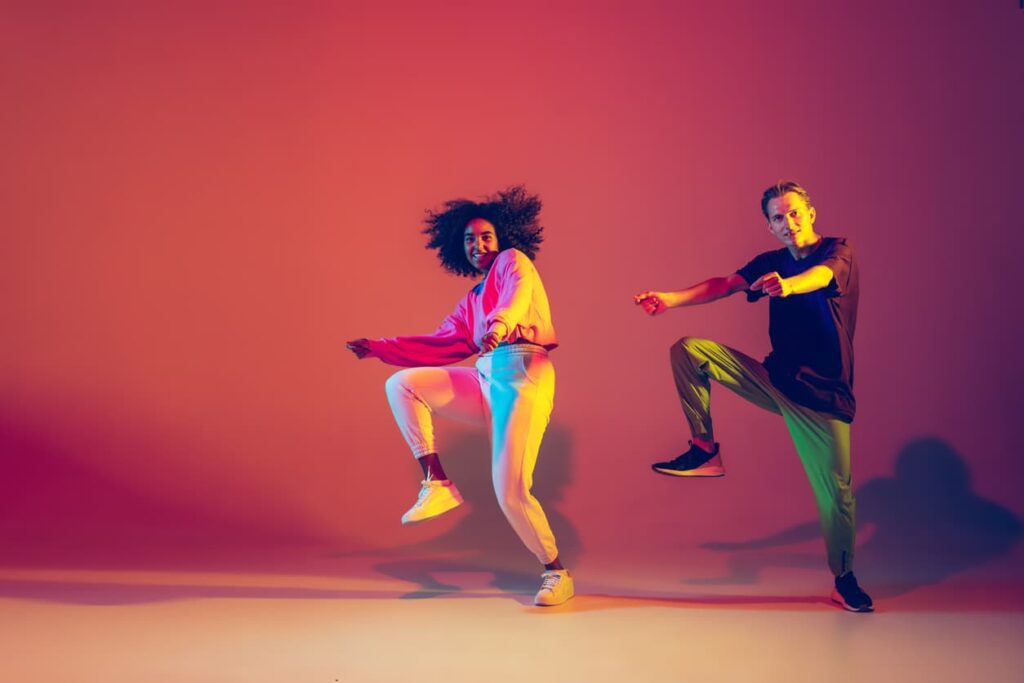
Summary
Pole Dance: Your Guide to Artistic Excellence
There pole dancingonce associated with striptease, is now a popular artistic and sporting discipline which combines strength, flexibility and balance. It is practised around a vertical metal bar, commonly known as a vertical bar, and combines the physical and psychological benefits of a complete activity. Recognised by federations such as the French Dance Federation and POSA, it offers a solid pedagogical approach.
If you want to combine sport and dance, specialist studios such as Pole Dance Paris offer courses for all levels, from beginners to advanced. These schools make it a point of honour to create a spirit of goodwill between students. They also include complementary disciplines such as aerial hooping, Pilates and yoga, guaranteeing safe and rewarding progress.
Find out more about origins pole dance, its benefits and why it is attracting more and more people in search of a new way of fitnesswell-being and self-confidence.
If you're looking for a new way to train, an activity to unleash your creativity, or simply a way to fulfil yourself both physically and mentally, pole dancing is an option well worth considering.
Summary
The origins of pole dancing
Cultural influence
There pole dancing has its roots in ancient practices deeply rooted in various cultures. One of the major influences comes from Mallakhamba traditional form of gymnastics in India, performed on a wooden bar. This discipline, often regarded as a sacred art, emphasises the strength, there flexibilityand agility. It reflects the richness and cultural diversity of India, and is one of the most significant practices of the century.
In China, Chinese Pole is another major influence. Dating back over 2,000 years, this practice is characterised by acrobatic performances on rubber-covered steel poles. The artists demonstrate their balance, their strengthand their agility, creating breathtaking shows.
In addition to Asian influences, pole dance has also been influenced by cultural traditions in Africa and Europe. For example, the Maypolea pagan celebration of fertility, involved women holding ribbons tied to a large pole. They danced in circles, winding and unwinding the ribbons. This folk dance, celebrating spring or midsummer, spread to Germany, England and Sweden.
During the 20th century, pole dancing evolved as a result of circus and vaudeville shows. Circus performers used metal poles to perform acrobatic figures, captivating audiences with their strength and their agility. These unforgettable performances laid the foundations for the transformation of pole dance into a modern form of entertainment.
The many cultural influences have enriched contemporary pole dance, which combines strength, flexibilityand artistic expression. This unique and fascinating discipline offers a varied and rich experience to those who practise it, while celebrating the cultural diversity that gave birth to it.
Pole dancing
Types of Pole Dance
Pole dance comes in several forms styleseach with its own characteristics and requirements. These styles include acrobatic and artistic figures and technical performances that require great mastery and strength. Popular styles include :
Exotic Pole This style is characterised by movements sensual and fluid, often performed in high heels. It includes striptease elements, body rolls, floor work and leg extensions to create a captivating atmosphere. Exotic Pole is divided into sub-categories such as Exotic Flow and Exotic Hard, each with its own nuances.
Artistic Pole This style combines dance and performance art to convey a message or tell a story. Dancers use props or themes to enrich their routines. Creativity, choreography and execution are often judged in artistic competitions.
FreeStyle Pole Freestyle: This style emphasises creativity and self-expression. Dancers experiment with different movements and music to create unique routines, often performed at freestyle events or competitions.
Basic Techniques
To master pole dancing, it's essential to know the basics. basic techniques. Beginners start with simple moves such as the spin, hook or invert, then progress to more complex tricks. The discipline requires greater coordination, muscle strength and flexibility.
The use of grip products such as chalk or alcohol-silica is essential to ensure a good grip on the bar. Regular training helps to develop endurance and stability, while improving overall fitness.
Physical and psychological benefits of pole dancing
Muscle strengthening
Pole dancing involves intensive use of the muscles of the body, particularly the arms, legs, back and core. Acrobatic figures and poses on the metal bar strengthen the whole body and improve posture. The balances and contortions performed on the bar help to improve coordination and tone the body.
Self-confidence
By learning and mastering new movements, practitioners gain in trust and self-esteem. Success in this discipline encourages individuals to overcome challenges and make decisions with pride.
Fun aspect
Pole dancing combines physical activity entertainment. Dynamic choreography and shared moments make the practice fun and engaging, while burning calories.
Improved flexibility
Regular practice of pole dance improves flexibility and fluidity of movement. It also helps to prevent injury through stretching and specific figures.
Strength development
Pole dance's demanding figures allow you to develop a real sense of style. significant strength in the arms, legs and core. Practitioners progress gradually to execute complex poses.
Self-esteem
In an environment in solidarityThanks to a supportive community, and the caring educational direction of some of the studios, participants feel valued and their body image is strengthened. The encouraging community helps them to reclaim their bodies and develop greater self-esteem.
Sensuality and femininity
Pole dance combines strength and eleganceIt's a way for women to connect with their femininity. The fluid, expressive movements cultivate a sensual, positive dimension.
Recognition and popularity
International competitions
Pole dance is gaining increasing recognition thanks to international competitions such as the IPSF and IPC. These events attract athletes from all over the world, including some world-famous champions, highlighting the talent and diversity of this discipline.
Culture and community
Pole dancing brings together a community dynamic and inclusive. Practitioners share their passion in studios, workshops and evening events, strengthening ties and transcending geographical and cultural boundaries. This focus is helping the discipline to grow worldwide.
Conclusion
In short, pole dancing is a rewarding discipline that combines artistic expressionIt combines physical strength with psychological benefits. It offers a multitude of benefits, from improving flexibility to boosting self-confidence. Join this dynamic practice to transform your life and discover a new passion.
FAQs
What are the benefits of pole dancing?
THE benefits of pole dancing are many and varied. This discipline helps to improve flexibility and the mobility of the spine and muscles, while at the same time strengthening every muscle in the body. It also contributes to a healthier heart and increased endurance. Pole dancing also develops the sense of rhythmIt also helps to reduce stress and anxiety through the release of endorphins.
In addition to its physical benefits, pole dancing cultivates self-confidenceFemininity and sensuality. It can also improve posture and grace. On a mental level, this activity encourages better quality of sleep and delivers benefits such as empowerment and increased body confidence.
Is pole dancing difficult?
Pole dancing may be perceived as difficult, but it is also extremely versatile. rewarding. This discipline requires a combination of physical forceDancers need to develop strength, flexibility, coordination and mental resilience. Dancers need to develop great grip strength, sufficient stamina to support their own weight, and the flexibility to execute complex and elegant movements.
What's more, pole dancing requires a high level of skill. mental concentration and constant discipline to overcome the frustrations and physical pain that come with learning new moves and figures.
Why do women pole dance?
Women choose pole dancing for a variety of reasons. Many enjoy its mix of empoweringwhich combines strength, flexibility and self-expression. This activity enables them to claiming control their bodies, build up their self-confidence and join a community caring and supportive.
Pole dancing also offers significant physical benefits, such as muscle strengtheningThere are also emotional and psychological benefits, such as chronic pain management and greater body acceptance.
What do you call a girl who pole dances?
A girl who practices pole dancing is generally called a "pole dancer. In a more specific and sensual context, it can be described as a "exotic pole dancer or simply a "pole dancer.
Read also
follow us
on instagram
Follow our news,
take advantage of our tutorials and participate to our
contests!
BREAKING NEWS!
Receive our newsletter.





